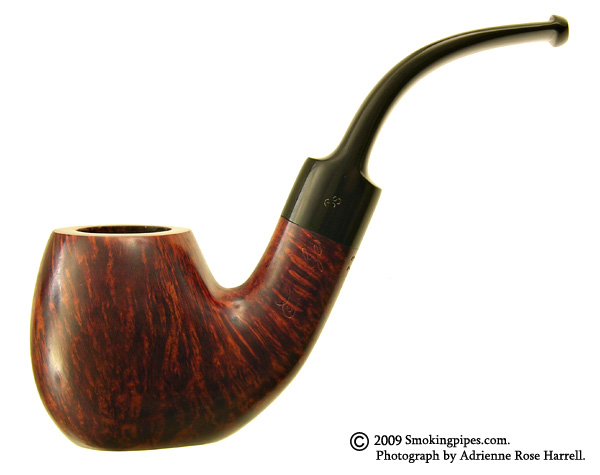This continues to be a fun discussion, but how much is really being said?
I've blueprinted countless pipes over the years. In all cases, they've ended up "smoking better." In some cases, they even ended up "tasting better," which is a very different thing. If I had to choose, and fortunately I don't, I'd choose the better tasting pipe every time, even if I had to sacrifice some of the "smokes better." The mechanics of "smokes better" could be satisfied by a pipe made on a CNC machine and fitted with an injection molded mouthpiece. At their best, Stanwell were coming pretty close to this. And, yet, I smoked a few Stanwells that were excellent, and a few that tasted like hell. The luck of the briar.
I've got amazing pipes that are far from today's standards when it comes to construction, but I wouldn't dream of changing them, for fear of losing the magic. I've had dreadful tasting pipes that are made nearly perfectly.
With a little blueprinting, I transformed a gurglemeister GBD into a fabulous smoke. Great. I also, as an experiment, took a pipe that smoked "okay," and put it through a series of tests, expanding the airway from its original, constricted flow to one large enough to park my GTi in. The pipe got better through the process, until it started getting worse. After about 4.3mm, the taste went out the window. By 4.7mm, it became a beautifully designed incinerator of pipe tobacco that delivered little flavour, but huge volumes of effortless smoke. It was efficient, and useless. I've also REDUCED the airway diameter of a few pipes, and improved their taste. Hmmm. Where are the rules?
I used to build race motors. I didn't have the benefit of displacement for the generation of performance, since I always played with little sport cars, not big iron. One of my favourite pastimes, then, was squeezing out 4-5 more HP out of a 903cc FIAT 850, or a 1098 Spridget, or something similar. Combustion chambers were equalized, intake and exhaust ports were improved, larger valves were fitted, cams with more lift, more overlap, better exhaust systems were designed, and the results were measured on a dynamometer. (It was fun and relatively cheap, then.) What's that got to do with pipes? There's a point where decreasing back-pressure in the exhaust system actually degrades performance due to reduced scavenging of the exhaust gasses during the overlap with the intake stroke. It's initially counterintuitive, but from a flow dynamics perspective, it makes perfect sense. There's a point where decreasing the "back-pressure" of the pipe can actually degrade flavour performance, for similar, though different mechanisms.
So, here's a little thought exercise. You' re ready for a smoke, and have your choice of two pipes. One will deliver amazing flavour, but will likely gurgle, requiring the occasional pipe cleaner, might need several relights, and will most certainly be the more fussy during the smoke. The other will burn impeccably, smoke to the bottom with a single light, and only ask for a pipe cleaner or two at the end. Which do you choose?
Of course, the ideal would be the pipe that does both, but forced to make the choice, I'll choose the tasty smoke over the easy smoke every time.






![[3-Size Set] Copper Pipe Cleaner for Drill, Clean 1/2, 3/4, 1-in Copper Pipes & Tubes for Soldering, 3 Tube Cleaning Brushes, Model InerLok050, 075, 100, w/ Stainless-Steel Wire Bristles & 1/4” Shank](https://m.media-amazon.com/images/I/41QVxunlqML._SL500_.jpg)
![[3-Size Set] Copper Pipe External Cleaner for Drill, Clean 1/2, 3/4, 1-in Copper Pipes & Tubes for Soldering, 3 Tube Cleaning Brushes,Steel Pipes Tubes and Fittings,with Wire Bristles & 1/4” Shank](https://m.media-amazon.com/images/I/3173meSSjsL._SL500_.jpg)











![[4PC Bundle] 3/4-Inch Copper Pipe Cleaner Set for Power Drill, 3/4” Tube Cleaning Brush, Cleans Copper Pipes Tubes and Fittings for Soldering, w/ Stainless-Steel Wire Bristles & 1/4” Shank](https://m.media-amazon.com/images/I/41TyAXGngCL._SL500_.jpg)



